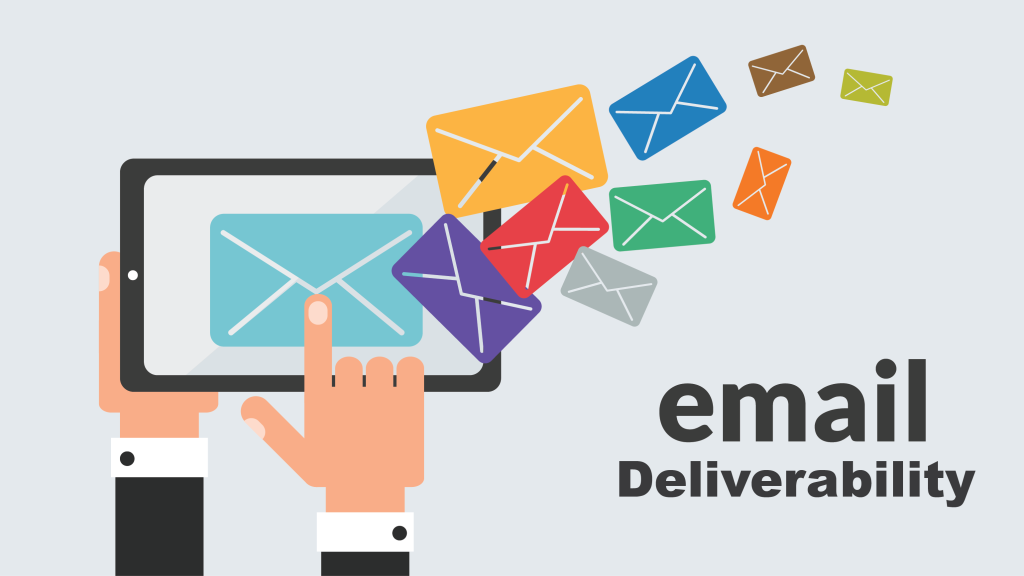Email Deliverability with Authentication plays a vital role in the success of any email marketing campaign. Ensuring high deliverability means your emails land in recipients’ inboxes instead of getting filtered into spam. A key method to boost deliverability is through email authentication. In this blog post, we’ll explore the three main email authentication protocols: SPF, DKIM, and DMARC. We’ll explain what each protocol does, how they function, and how to set them up to improve your email deliverability.
Table of Contents
What is Email Deliverability with Authentication?
Email authentication is a collection of techniques used to verify the legitimacy of an email sender. By implementing these techniques, you can protect your domain from being used in email spoofing and phishing attacks. The main email authentication protocols are SPF (Sender Policy Framework), DKIM (DomainKeys Identified Mail), and DMARC (Domain-based Message Authentication, Reporting & Conformance). Each protocol has a unique role in ensuring the authenticity of an email.
Sender Policy Framework (SPF)
What is SPF?

SPF is an email authentication method designed to detect and prevent email spoofing. It allows the owner of a domain to specify which mail servers are authorized to send emails on behalf of their domain.
How Does SPF Work?
SPF works by adding a special DNS record (TXT record) to your domain’s DNS settings. This record lists the IP addresses of servers that are permitted to send emails for your domain. When an email is sent from your domain, the receiving mail server checks the SPF record to verify that the email is coming from an authorized server.
Benefits of SPF
- Reduces Email Spoofing: By specifying authorized mail servers, SPF helps prevent unauthorized servers from sending emails on behalf of your domain.
- Improves Deliverability: Emails sent from authorized servers are less likely to be marked as spam, improving the chances of reaching recipients’ inboxes.
- Enhances Domain Reputation: Consistent use of SPF can enhance your domain’s reputation, further improving deliverability.
How to Implement SPF
- Identify Authorized Servers: Determine which mail servers you use to send emails (e.g., your email marketing service, web server, etc.).
- Create an SPF Record: Create an SPF TXT record in your domain’s DNS settings. The record should include the IP addresses of your authorized mail servers.
- Publish the SPF Record: Add the SPF record to your domain’s DNS settings.
Here’s an example of an SPF record:
v=spf1 ip4:192.0.2.0/24 include:google.com -all
DomainKeys Identified Mail (DKIM)
What is DKIM?

DKIM is an email authentication method that allows an organization to take responsibility for a message in a way that can be validated by the recipient. It uses cryptographic signatures to verify the authenticity of the email’s origin.
How Does DKIM Work?
DKIM works by adding a digital signature to the email header. This signature is generated using a private key known only to the sender. The recipient’s mail server uses the corresponding public key, published in the domain’s DNS records, to verify the signature.
Benefits of DKIM
- Ensures Email Integrity: DKIM ensures that the email content has not been altered during transit.
- Builds Trust: Recipients can trust that the email is genuinely from the claimed sender.
- Reduces Spam and Phishing: Authenticated emails are less likely to be marked as spam, and it becomes more challenging for attackers to spoof your domain.
How to Implement DKIM
- Generate a DKIM Key Pair: Use your email server or a DKIM generator tool to create a private-public key pair.
- Publish the Public Key: Add the public key to your domain’s DNS settings as a TXT record.
- Configure Your Email Server: Configure your email server to sign outgoing emails with the private key.
Here’s an example of a DKIM DNS record:
default._domainkey.example.com. IN TXT "v=DKIM1; k=rsa; p=MIIBIjANBgkqhkiG9w0BAQEFAAOCAQ8AMIIBCgKCAQEA7..."
Domain-based Message Authentication, Reporting & Conformance (DMARC)
What is DMARC?
DMARC is an email authentication protocol that builds on SPF and DKIM. It provides domain owners with the ability to protect their domain from unauthorized use and receive feedback on email authentication performance.
How Does DMARC Work?
DMARC works by aligning SPF and DKIM mechanisms to ensure that both the “From” address and the actual sender domain match. It also allows domain owners to specify policies for handling emails that fail authentication and to receive reports on email authentication results.
Benefits of DMARC
- Comprehensive Protection: DMARC protects against both direct domain spoofing and phishing.
- Enhanced Visibility: DMARC reports provide insights into who is sending emails on behalf of your domain.
- Improved Deliverability: By enforcing stricter email authentication, DMARC improves overall email deliverability.
How to Implement DMARC
- Create a DMARC Record: Create a DMARC TXT record in your domain’s DNS settings. This record specifies your email authentication policy and reporting preferences.
- Publish the DMARC Record: Add the DMARC record to your domain’s DNS settings.
Here’s an example of a DMARC record:
_dmarc.example.com. IN TXT "v=DMARC1; p=none; rua=mailto:dmarc-reports@example.com; ruf=mailto:dmarc-failures@example.com; pct=100"
This record specifies a policy of “none” (no action), sends aggregate reports to dmarc-reports@example.com, failure reports to dmarc-failures@example.com, and applies to 100% of emails.Best Practices for Email Authentication

Implementing SPF, DKIM, and DMARC is just the beginning. To maximize the effectiveness of your email authentication strategy, follow these best practices:
- Regularly Monitor Reports: Use DMARC reports to monitor email authentication performance and identify potential issues.
- Gradually Enforce Policies: Start with a “none” policy in DMARC to gather data, then gradually move to “quarantine” and “reject” policies as you gain confidence.
- Stay Informed: Keep up-to-date with changes in email authentication standards and best practices.
- Educate Your Team: Ensure that everyone involved in email marketing and IT understands the importance of email authentication.
Conclusion
Email authentication is a critical component of a successful email marketing strategy. By implementing SPF, DKIM, and DMARC, you can protect your domain from spoofing, improve your email deliverability, and build trust with your recipients. Start by setting up SPF and DKIM, then enhance your protection with DMARC. Regularly monitor your email authentication reports and adjust your policies as needed. With these steps, you’ll be well on your way to maximizing your email deliverability and ensuring that your messages reach your intended audience.



